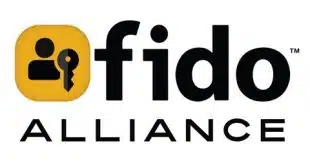When the Plenti loyalty program—announced Wednesday by American Express Co.—debuts this spring, it will mark the first time a U.S. consumer-rewards program on a national scale enabled points to be earned and used across multiple merchants.
The inaugural group of merchants includes AT&T, ExxonMobil Corp., Macy’s Inc., Nationwide Mutual Insurance Co., Rite Aid Corp., Direct Energy, and Hulu. Of these, ExxonMobil and Rite Aid are also members of Merchant Customer Exchange, whose CurrentC mobile-payments service is preparing to launch. The service is expected to include consumer rewards and offers.
Though US Loyalty, a division of AmEx, will run the Plenti program, consumers are not restricted to using AmEx cards to earn points. AmEx says any form of payment accepted by participating merchants, including cash, prepaid, credit, debit, and charge cards, is eligible.
Details of the enrollment process, whether there is an app, and how the program will function at the point of sale were not available. AmEx said that every 1,000 points earned translates into at least $10 in savings, with opportunities to earn points faster through offers from brands and on Plenti’s Web site.
AmEx does not lack for institutional experience operating coalition-loyalty programs. Payback, an AmEx business it acquired in 2011 when it bought Loyalty Partner, is one such service available in Germany, India, Poland, Italy, and Mexico.
In the Payback India program, consumers swipe the loyalty card at the point of sale. For online transactions, consumers enter their 16-digit Payback numbers during checkout. Payback also offers merchants customized marketing services to run long-term and seasonal promotions.
The concept of a multimerchant approach broadens the appeal and deepens the value of loyalty programs, says Beth Robertson, a payments researcher based in the Baltimore area. “One of the drawbacks of the one-off merchant approach is that there is a lot of information for a consumer to manage on a merchant-by-merchant basis to derive value,” Robertson says in an email. “This approach begins to eliminate that problem because rewards can be managed across the coalition of merchants.”
And because Plenti enables consumers to use multiple card brands, it will draw more users to the program, she says. “It’s a forward-moving approach, and the direction in which I believe the loyalty market has to head to build true value for users.”
Still, the major question about Plenti is whether consumers will use it, says Barry Kirk, vice president of loyalty strategy at Maritz Motivation Solutions at Maritz Holdings Inc., a Fenton, Mo.-based employee-motivation and business-services company.
“The real question is whether consumers will not just give a coalition program a look, but whether they’ll actually embrace the idea,” Kirk says in an email to Digital Transactions News. “It’s not a well-understood concept in the United States and consumers already complain that proprietary loyalty programs are too confusing.”
In Plenti’s favor is AmEx’s brand recognition, Kirk says. “Where other attempts at U.S. coalitions have failed to arouse much interest, consumers and brands are definitely going to pay attention to any program with American Express at the forefront.” Still, Plenti will have to aggressively market itself, Kirk notes, in hopes that consumers use it long enough to master the program.
If consumers embrace Plenti, the advantages could be significant, Kirk says. “Members will be able to earn and redeem their points freely across all the brands in the coalition, rather than having to keep track of separate currencies locked into specific brands as they have to do today.”
Plenti’s advantage also extends to choice. “We know that choice is a major driver of consumer engagement in loyalty programs, and coalition programs offer choice in a way that proprietary programs can’t.”





